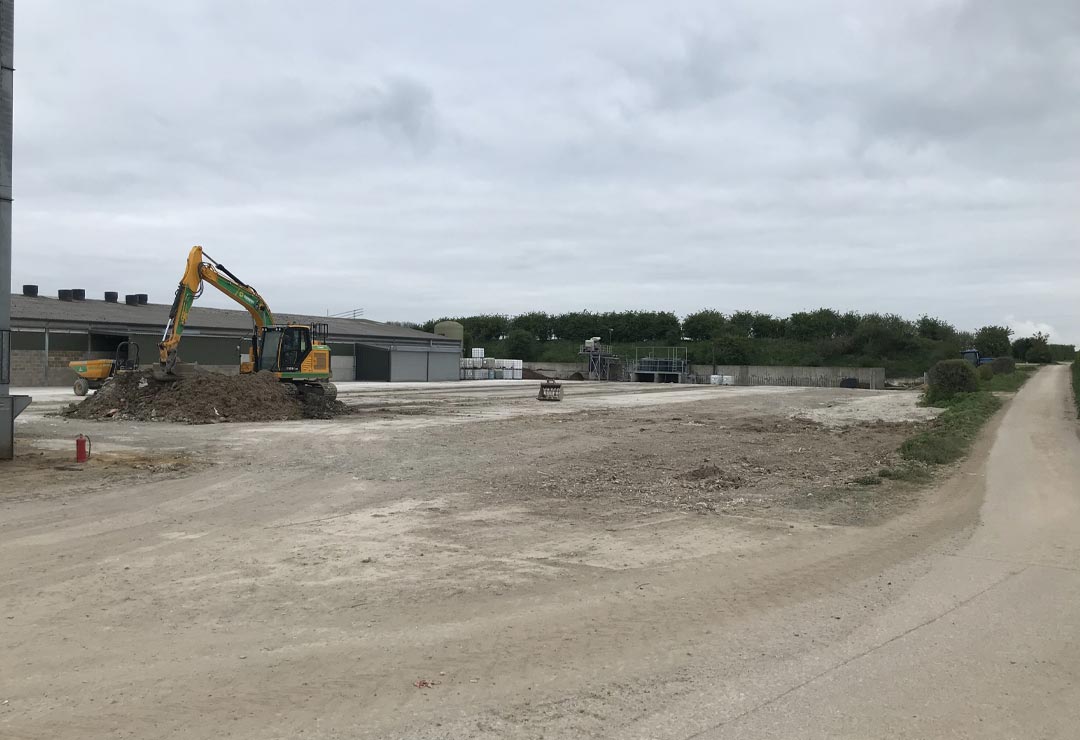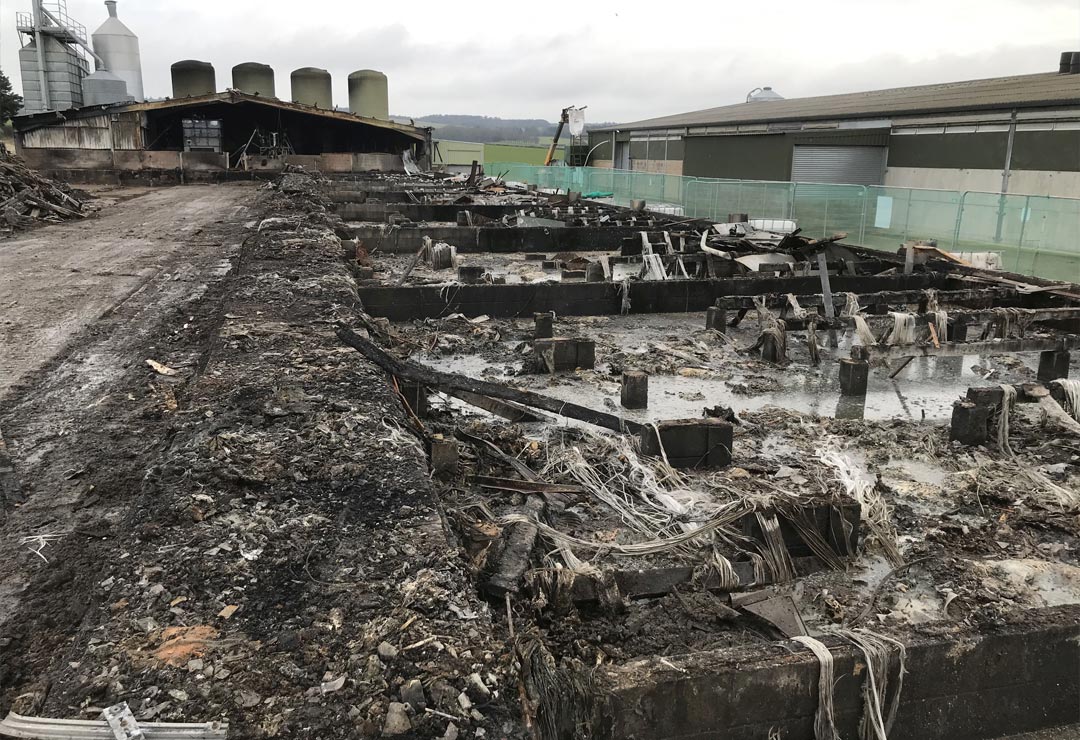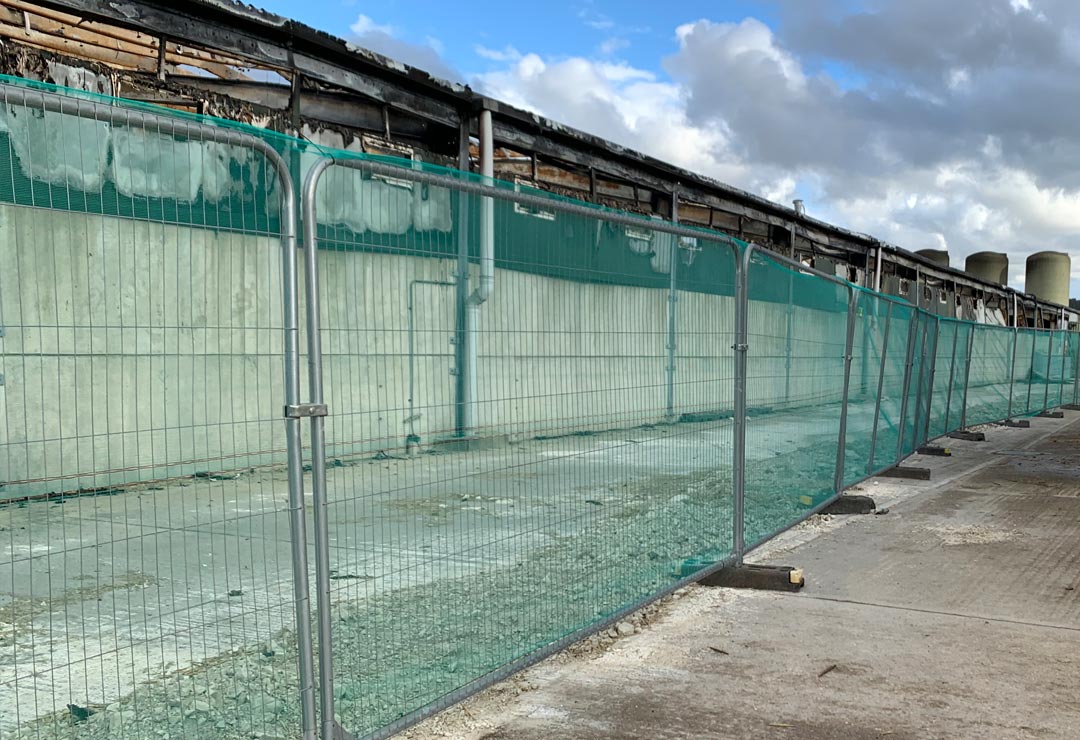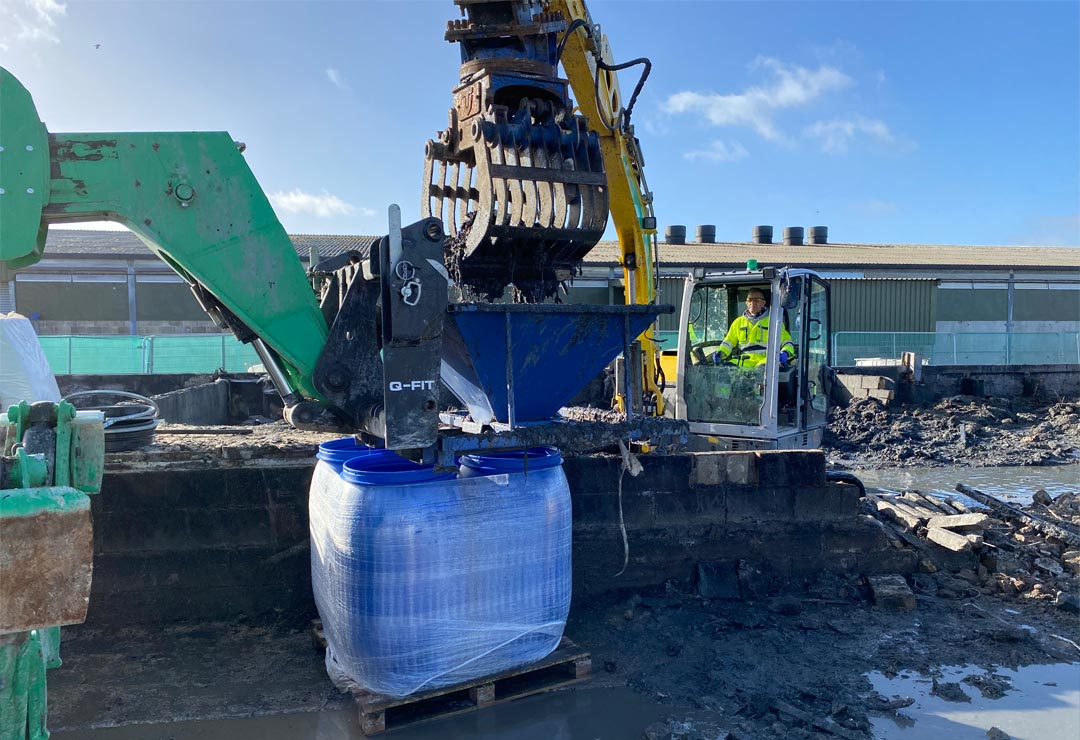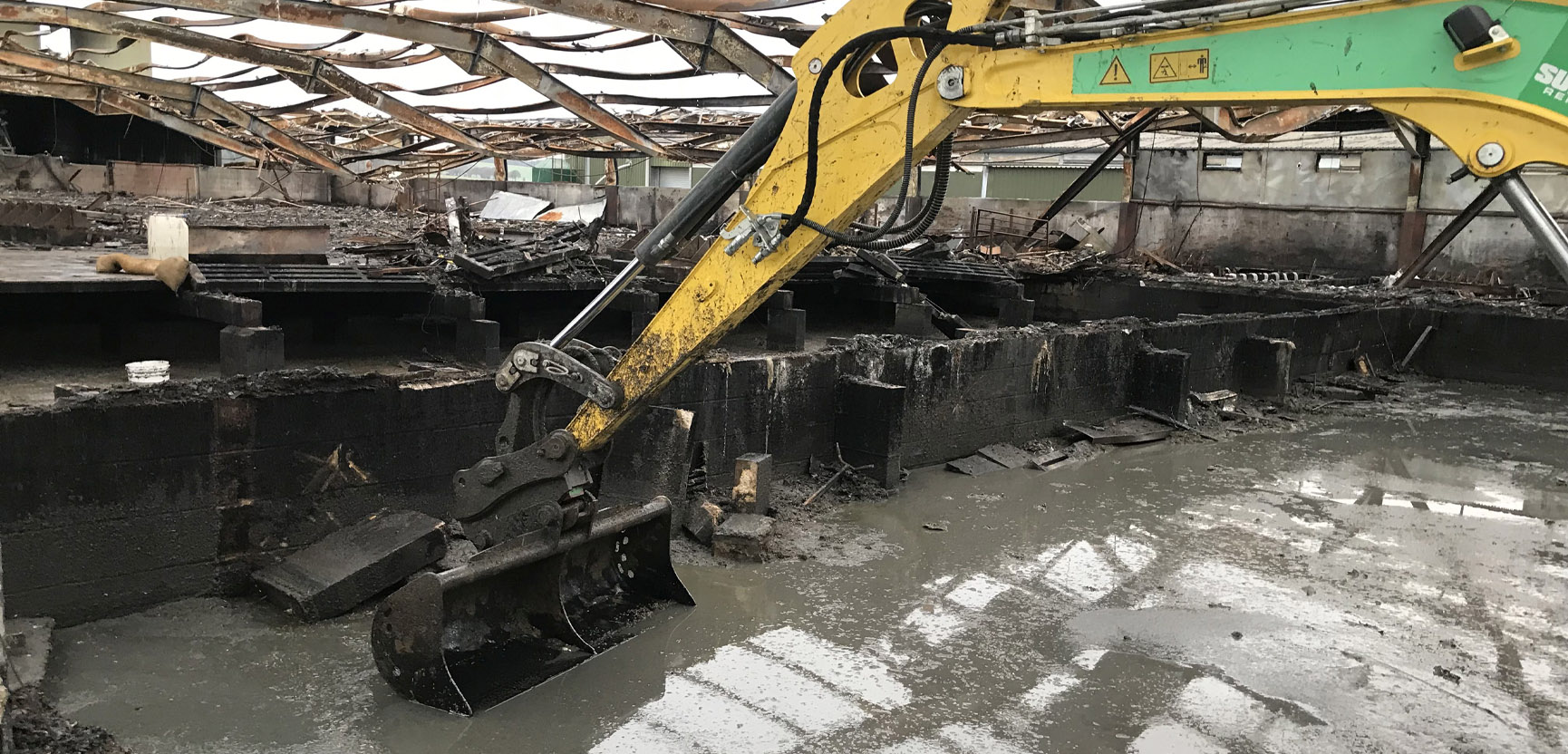
Case study: Agricultural Fire in Berkshire
The Incident
Seed Environmental were appointed to attend an agricultural fire incident following works completed by the fire brigade. The affected building was an agricultural unit containing 3,500 pigs forming part of a larger pig farm. The bottom 2.5m of the building (above ground) was constructed of concrete blocks arranged to form thirteen slurry containment pits, holding approximately 500,000litres of slurry between them at the time of the fire.
The upper section of the building was of steel portal frame construction built off of the lower concrete block walls. Our teams were deployed on the weekend to erect fencing to keep the public out of the site, assess the impacted building for any stability/containment concerns and to determine if any of the liquid waste stored in the building had escaped/posed an imminent risk to the down gradient river.
The Solution
The fire had killed all of the livestock held within the unit, in places the heat from the fire had cracked the external walls of the slurry containment pits, the steel frame had warped, twisted and dropped, the roof collapsed into the building bringing with it the roof mounted solar panels which degraded in the fire and realesed heavy metals into the slurry below and in places the floor had melted resulting in some of the animal carcasses falling into the slurry. With other livestock present in close proximity to the fire damaged unit an additional concern was the risk of disease spreading from the decaying carcasses.
The Outcome
The building was not deemed structurally safe. Therefore temporary bracing was fitted to areas of concern to reduce the risk of uncontrolled slurry loss and consequential wider environmental problems and to ensure the area was safe to work in. Carcass removal proceeded as soon as it was deemed safe to proceed with the waste leaving site for incineration. In unison with these works a slurry holding lagon remote from the building had its exiting contents moved to another yard of the farm to enable the slurry beneath the damaged building to be transferred to safer containment in the unaffected lagoon. Following carcass and slurry removal the remains of the building were dismantled and recycled / disposed as appropriate. Disposal solutions for the slurry were sought. This was a challenge because it represented a mixed waste with the slurry containing animal body parts and heavy metals. The hunt for a solution involved DEFRA, the EA and the Welsh Government and the final solution involved the EA allowing some of its usual rules to be bypassed. The eventual solution required the slurry to be transferred to sealed drums for transportation to a waste treatment facility for licensed processing. Following completion of carcass and slurry removal and full demolition of the building the site was handed back to the farm whom with assistance from insurers appointed their usual contractors to erect a new unit.
Client
Agricultural, Berkshire.
Services provided by our experts
- Weekend emergency response to make safe
- Temporary structural works
- Carcass removal for off-site disposal
- Liquid waste containment, disposal negotiations and subsequent disposal
- Concrete washing and disinfecting
- Demolition of the damaged unit and site left cleared and left safe for rebuild
